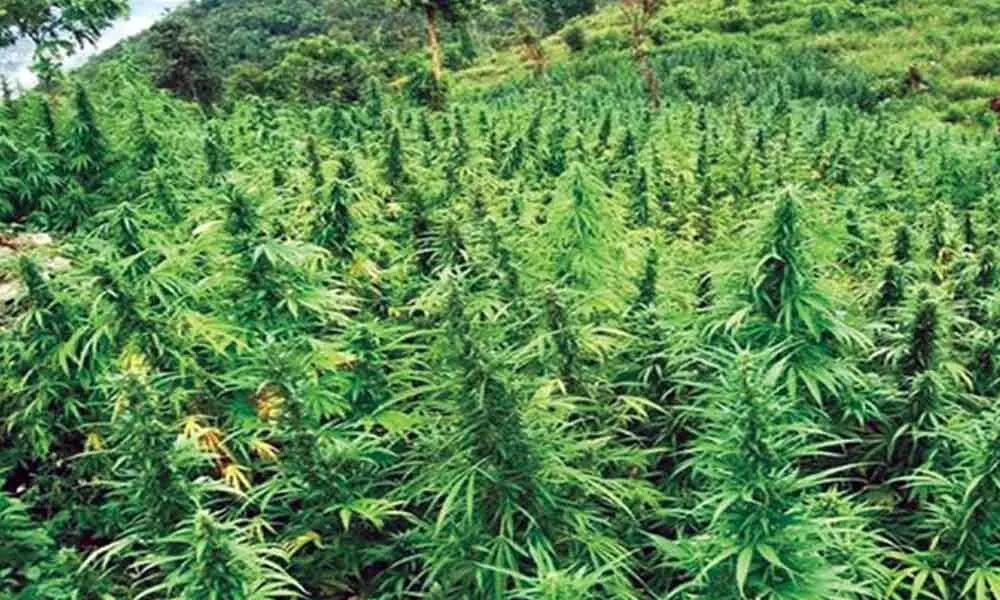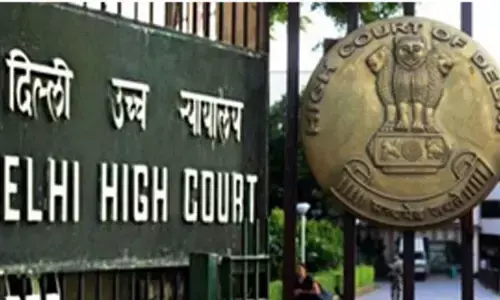Amaravati : Ganja smuggling goes unabated in State

Ganja smuggling goes unabated in State
Drug peddlers have been cajoling tribals into the cultivation of ganja at least for the last 15 years
Amaravati : Has ganja cultivation gone up in Andhra Pradesh compared to the past? Why is it that this substance is so often in the news nowadays?
When Narcotics Control Bureau (NCB) sleuths busted an inter-State ganja trafficking racket and seized 3,400 kilos of ganja worth Rs 12 crore in August this year in the vicinity of Hyderabad, they did so on specific intelligence. The NCB team arrested three peddlers — D Shinde, MR Kamble and N Joganand, natives of Latur district in Maharashtra.
In June last, a police team apprehended four members of an inter-State gang of ganja peddlers during patrolling near the bus stand in the temple town of Bhadrachalam and seized ganja worth Rs 6 lakh (40 kgs). Interrogation of the arrested, tells us that the supplier of the ganja to the arrested persons was a regular supplier and had transported ganja worth more than Rs 1.20 crore in an year.
This has become a routine in the Telugu States. But, the origin of the ganja shipment always remains the AP-Odisha border areas usually. Sometimes, of course, Bhadrachalam too figures in this. This temple town borders Odisha-Chhattisgarh-Andhra Pradesh States.
An estimation by the authorities shows that border areas like Chintapalli, Munching Puttu, Paderu, Dumbriguda, Gangaraju Madugula mandal areas and Pedabayalu and Hukumpeta are known ganja cultivation areas.
Tribals have been growing ganja for medicinal purposes for a long time. In fact, it has become a part of their life, one could say. Yet, growing ganja for commercial purpose has been taught to them by the businessmen from the plains. Drug peddlers have cultivated the tribals into the habit from at least the last 15 years.
The tribals who were not aware of the consequences of either the illicit trade or the legal implications have been cajoled into cultivating these plants.
Excise and police officials are unanimous in saying that there is a sense of fearlessness among the tribals in these interiors because they don't patrol the areas. Police movement, if any, in these areas is confined to combing operations and not specific to anti-ganja cultivation.
The Maoist presence has prevented officials from venturing far and deep into these areas where the drug peddlers and smugglers don't hesitate to move about.
This has emboldened the tribals too nowadays and they keep farming the narcotic substance. There are instances of tribals growing ganja in their backyard too here. It has become a menace. What was once a smaller area has now spread to near about 15,000 acres and more in the areas@.
This itself is a 30 per cent increase in the cultivation area of ganja in the last 10 years.
Police officials, particularly, those who worked in the border areas admit that the seizures have gone up to at least 30-40 a month. Excise officials do not often file cases against the tribals too so as not to push them further towards Naxalism.
It is admitted that the Paderu-Araku belt ganja is in great demand as it is 'organic'. The officials also admit that 'the seizures are to the tune of about 40,000 kg a year nowadays. But, what slips away is much more.
"This area has become a favourite hunting ground of the immoral businessmen from several States like Tamil Nadu, Kerala, Maharashtra and Rajasthan etc.," a senior IPS officer of AP says.
Greater employment opportunities and providing proper avenues of income could go a long way in weaning the tribals away from the habit, he adds. "Just oral commitment to tribal welfare means nothing," he adds in the same breath.
Woman injured in stabbing attack in Tokyo, suspect at large
Bengal cop booked for murder over mysterious death of woman home guard, SIT to probe case
Staffer recalls horror of 7-kg gold robbery by armed gang in Karnataka’s Hunsur
25-Year-Old Airline Cabin Crew Member Dies At Gurugram Party; Police Begin Investigation
















